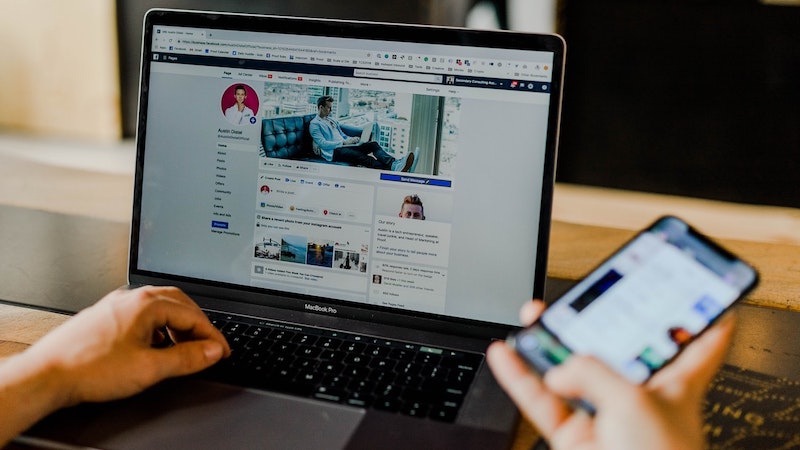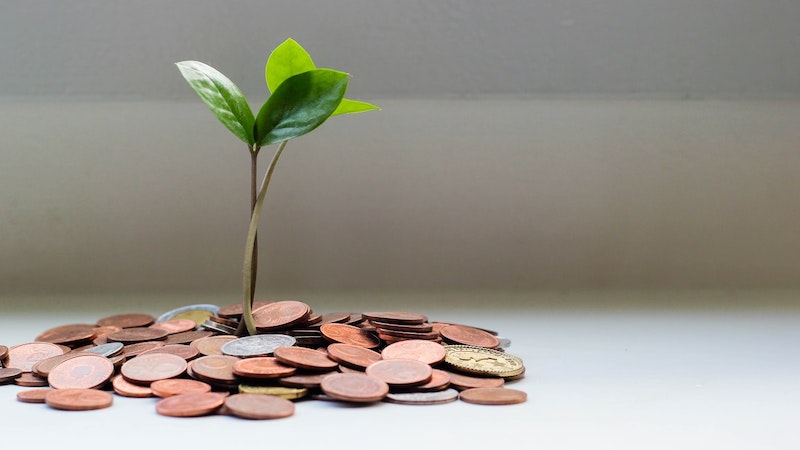Storrito is your autopilot forInstagram Stories
Instagram Ad Costs: The Complete Business Guide for 2021
Running ads on Instagram can be very beneficial for your brand. In this guide, we’ll explore how Instagram Ads work, how much they cost, what influences their prices, and how you can get the most out of your ads while still keeping your costs low.
With more than one billion active daily users, a diverse user demographic, high engagement rates, and smart algorithms constantly gathering valuable user data, Instagram is one of the top social media platforms for targeted advertising.
In addition to your regular marketing campaigns on Instagram, it can be very effective to run ads on the platform. And by the way, you don’t even need an Instagram account to run ads; you can create Instagram ads as long as you have a Facebook business account.
Why you should consider running Instagram ads
Even if your unpaid posts on the site are already successful, and also if you are trying to decide which social media platform to invest in for advertising, there are several reasons why running ads on Instagram is worth it.
First, Instagram ads tend to perform better and yield higher profits than other social media sites. According to research, Instagram ads tend to have higher engagement rates than ads on other social media sites such as Facebook and Twitter. Instagram ads also, on average, to lead to higher order values. The average order value for paid ads on Instagram is $103, compared to $65 for unpaid posts. Only Pinterest has higher order values, which makes Instagram one of the most lucrative social media sites for advertising.
Second, even if you don’t run ads on other social media sites and your brand is successful on Instagram, Instagram ads also offer your brand a few advantages that unpaid regular posts don’t have.
Links
For instance, when uploading a post to your regular feed, you can’t include a link in the description. The most you can do is include a link in your bio and direct viewers to this link in the post description. When running an ad, however, you can include links directly in the description of a feed post.
Video length
Typically, the maximum video length in Instagram Explore and Feed is 60 seconds. In Stories it can only be up to 15 seconds. However, if you run an ad, your video can be up to two minutes long. This gives you a lot more time to convey your message.
Targeted Message
Instagram’s algorithms do a very good job at gathering user data, and they are extremely accurate about showing ads to users who are part of your target audience. This makes ads far more effective than regular posts when it comes to getting your brand’s message to the right people at the right time.
How to place an ad on Instagram
The Facebook Ads Manager is your starting point for running a campaign for any Facebook platform, including Instagram. Here, you can also choose to run an ad campaign across multiple Facebook platforms, create comparison ads to test which one performs best, and edit your campaigns in order to improve their performance.
If you are just starting out with Instagram ads, we recommend focusing on three basic aspects: creating an ad, defining your target audience, and setting your budget.
Create an ad
After you upload your ad to the Ads Manager, the first thing you have to do is pick a campaign objective. In general, this is something you should think about beforehand, since your campaign will be more successful if you know what you want to achieve
For Instagram ads, you can choose one of the following three objectives:
- Awareness: Reaching as many people as possible to raise awareness for your brand
- Consideration: Finding potential customers for your business
- Conversion: Increasing sales
There are several sub-objectives you can set, depending on the goal of each campaign. For example, a consideration goal can be website traffic or app installs, while a conversion goal can be shop visits or product catalog sales.
Define your target audience
As with the campaign objectives, it is also important to know exactly who you want to target with your ad. Otherwise, if you put a lot of money into an ad but show it to the wrong people, you will have wasted your resources.
Facebook actually allows you to pre-define your target audience, group them in different categories, and then select who you want to target with which ad. You will notice that you have many options. For instance, you can select your target audience based on location, age, or even behavior.
If you don’t know exactly who your target audience is yet, try to define a general marketing persona, and then go from there. As your campaign goes on, you will be able to see if you are reaching the right people or if you need to adjust your filters.
Select your ad placement and budget
The next steps in setting up your ad campaign on Instagram are to select the placement and the budget. For Instagram, you can select either a Feed or a Stories placement, or both. Then, you can select your budget.
You can either set a daily budget or a lifetime budget. A daily budget sets a cap on how much you’ll spend on Instagram ads per day. The lifetime budget defines the maximum amount you want to spend on the entire campaign throughout its duration. Therefore, you also have to decide on a time frame for your campaign and set launch and end dates.
In the next step, the Ads Manager will ask you to optimize your ad delivery. You can either choose to optimize your ad for link clicks or impressions. If you optimize for link clicks, the algorithm will play your ad in such a way that you get the most possible clicks out of it. Alternatively, if you optimize for impressions, Instagram will show your ad as many times as possible, based on your set budget.
Auction bidding
When you pay for an ad campaign on Instagram, you enter a worldwide auction where you compete for people’s attention. Instagram will give the best slot to the winning bidder, based on who Instagram thinks will contribute the most values to its users through their ads. There are three factors that determine the value of a campaign:
- The amount you bid
- How likely you are to complete the action you optimized the ad for (estimated action rates)
- Ad quality and relevance (how likely it is that users might be interested in the ad itself)
Unless you are very experienced with Instagram campaigns or have a very specific purpose, we recommend choosing the automatic bid option, which will not break your bank but still yield good results.
Obviously, the amount you set for your bid will influence the total cost of your campaign. In practice, Instagram will run your ad until you have reached your set budget limit. However, how do you know how much you should budget for an Instagram ad?
How much do Instagram ads cost?
The cost of Instagram ads varies. The average price in 2021 has been between $0.40 and $0.70 per click if the ad doesn’t include a link. For ads with links, the average price has been between $0.50 and $0.95.
However, there are some factors that influence the ad price, such as the targeted demographic, time constraints, campaign goals, and ad placement.
For example, in industries that are highly competitive on Instagram, such as fashion and beauty, ad prices are higher. Depending on your actual campaign, it is therefore possible to pay more than $2 per click.
So, how do the different factors influence ad prices?
Age
The cost per click for ad campaigns varies depending on the age group you want to target. Typically, the age group between 18 and 44 will be the most expensive, as people in this group tend to spend more on their purchases.
Time
Running an ad at a certain time can influence the price. For instance, running an ad for heaters in the winter will be more expensive than during the summer. Also, there are certain seasonal events where people tend to spend more money, such as Christmas, Black Friday, and Valentine’s Day. These dates will also have higher ad prices.
Gender
Since Instagram has slightly more female than male users, it will be more expensive to target women, since there is more competition.
Ad Placement
Depending on the ad placement, the cost per click varies. On Instagram, ads in stories are cheaper than Feed ads.
Campaign Goals
Your campaign objectives also influence the price. The later in the customer journey funnel you set your goal, the more expensive it will be. Setting more general objectives, such as awareness, is therefore cheaper than setting conversion as the objective.
Audience Size
Targeting a wider audience is typically less expensive because there is less competition for a specific group of people. On the other hand, the more defined your target audience is, the more you will have to pay because now you are competing with many others for a very select group of people.
How to keep your costs low
Especially if you are new to Instagram advertising, you might not know in advance how your ads will perform, so you might not be sure how to set your budget. You obviously don’t want to spend too much, but you also don’t want to set your budget too low and then miss your goals.
The following tips can help you to keep your costs low while still optimizing your ad performance.
Start with broader campaign goals
Typically, it takes a few rounds of targeting customers and re-targeting them before they are not only aware of your brand but have also gained enough exposure to make a purchasing decision. We therefore recommend starting with broader (and cheaper) campaign objectives.
For instance, if you choose consideration as a goal and lead potential customers to your website, they will get the chance to learn more about your brand and read about your products. In a second campaign, you can then aim for conversion. This way, you will see better results and yield a better return on investment, since most users need several interactions with a brand before they will decide to make a purchase.
Track your ad results
Use Instagram’s detailed ad analytics tools to track the performance of your Instagram ads. Knowing what works and what doesn’t will help you to improve your ad campaigns for the future and end up with a better return on your investment.
Tracking ad performance can also be very helpful for unpaid posts. While the Ads Manager gives you access to very detailed metrics during your campaign, you can also extrapolate data for future posts. For instance, your campaign metrics might reveal that your ad had the highest engagement numbers between 7 and 9 PM. You can then use this knowledge and also publish regular unpaid posts around this time to improve their performance.
Especially if you work with scheduling tools, knowing the time slots for your posts that perform the best can be a huge advantage. For example, when using a web tool like Storrito for scheduling Instagram stories, you can use the ad data you gathered to pick the best publishing times. Beyond saving you a lot of time in planning your posts, this will also help optimize the performance of your posts.
Ready to schedule your stories?
Tools
- Auto Post Instagram Stories
- How to Upload a Video to Instagram Story from PC
- Schedule Instagram Stories with the Link Sticker
- Upload and post Instagram Reels from PC
- Schedule Instagram Stories
- Can you schedule Instagram stories? Yes, with Storrito.com! (Here's How)
- Instagram Story Planner (Scheduler)
- Schedule Facebook Stories from PC
- Instagram Story Maker Online
- How to schedule Instagram Reels
- How to add a story in Instagram from PC or Mac?
- Post Instagram Stories from PC
Subscribe to our newsletter
Be the first to know when we're adding new features and releasing new updates!


